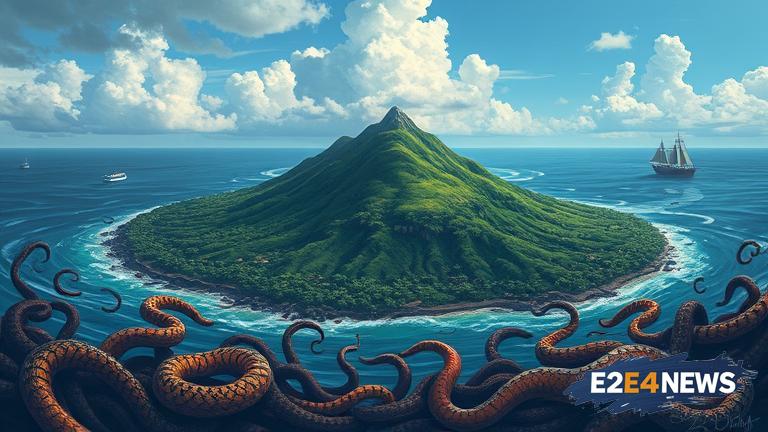Ilha da Queimada Grande, located about 43 kilometers off the coast of Brazil, is a small island that has gained notoriety for being one of the most snake-infested places on the planet. The island is home to thousands of golden lancehead vipers, a species of venomous snake that is found only on this island. The snakes are so abundant that it is estimated that there is one snake per square meter, making it a highly dangerous place for humans to visit. The Brazilian government has put in place strict restrictions to prevent people from visiting the island, and it is only accessible with special permission from the government. The island’s unique ecosystem has allowed the snakes to thrive, and they have become an integral part of the island’s food chain. The golden lancehead viper is a highly venomous species, and its venom is capable of killing a human being within minutes. The snakes are also highly aggressive and will attack without provocation, making them a formidable predator. Despite the dangers, the island has become a topic of interest for scientists and researchers, who are studying the unique ecosystem and the snakes that inhabit it. The island’s isolation has allowed the snakes to evolve independently, and they have developed unique characteristics that are not found in other species of snakes. The golden lancehead viper is a critically endangered species, and conservation efforts are underway to protect the island and its inhabitants. The Brazilian government has established a number of protected areas around the island, and it is working to educate the public about the importance of preserving the island’s unique ecosystem. The island’s history is also shrouded in mystery, and it is believed that the snakes were introduced to the island by pirates who used it as a hideout. The island has also been the subject of numerous legends and myths, with some claiming that it is cursed. Despite the dangers and the restrictions, some adventurers and scientists have attempted to visit the island, but these attempts have often ended in disaster. The island’s remote location and lack of infrastructure make it a challenging place to visit, and the risks associated with the snakes make it a highly dangerous endeavor. The Brazilian government is working to promote eco-tourism in the area, but it is doing so in a responsible and sustainable manner, with the goal of preserving the island’s unique ecosystem. The island’s unique biodiversity has also made it a topic of interest for the scientific community, and researchers are working to study the island’s flora and fauna. The golden lancehead viper is not the only species of snake found on the island, and other species, such as the boa constrictor and the coral snake, are also present. The island’s ecosystem is also home to a number of other animals, including birds, monkeys, and reptiles. The island’s geology is also unique, with a number of rocky outcrops and caves that provide a habitat for the snakes and other animals. The island’s climate is tropical, with high temperatures and high levels of humidity, making it an ideal place for the snakes to thrive. The Brazilian government is working to protect the island and its inhabitants, and it is taking steps to prevent the introduction of invasive species that could harm the island’s ecosystem. The island’s conservation status is critical, and it is considered one of the most important conservation areas in Brazil. The island’s unique ecosystem and biodiversity make it a valuable resource for scientific research, and it is an important part of Brazil’s natural heritage.





